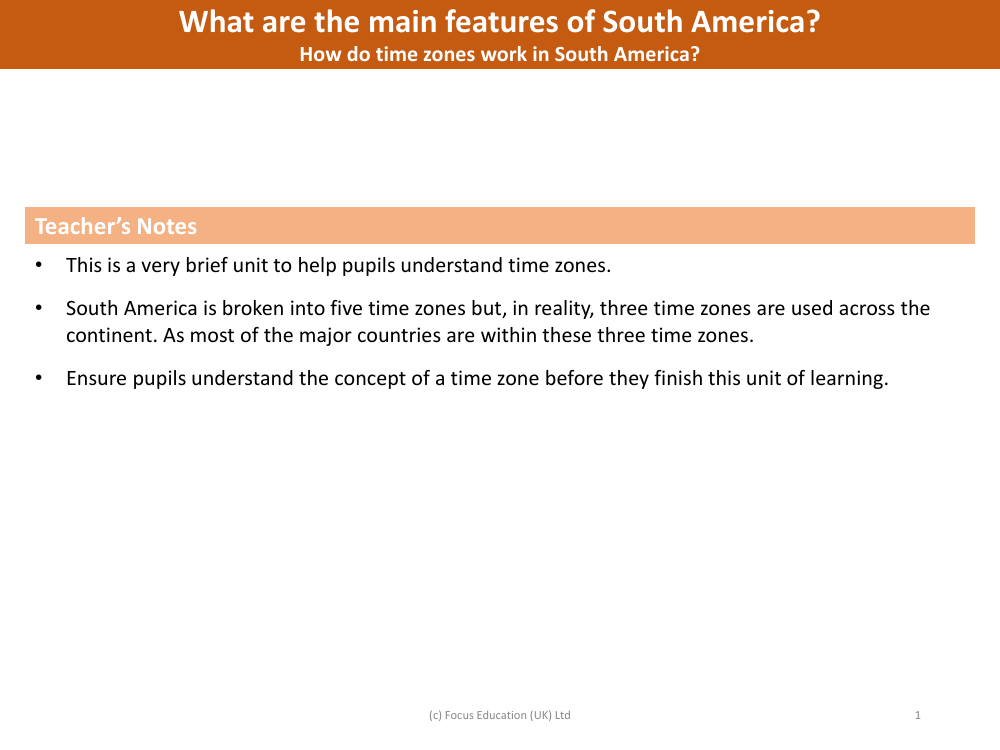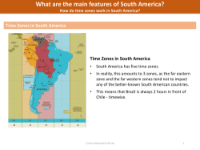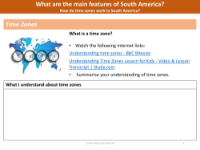How do time zones work in South America? - Teacher notes

Geography Resource Description
Time zones are a fundamental concept in geography that help us understand how time is regulated across different regions of the world. In South America, the concept of time zones can be a bit complex due to the continent's vast size and geographical diversity. Although South America is technically divided into five time zones, in practice, only three of these time zones are predominantly used. This is because the majority of South American countries, including the most populous and economically significant ones, fall within these three time zones. When teaching pupils about time zones in South America, it is crucial to ensure they grasp the basic idea of what a time zone is and how it affects the local time in different countries within the continent.
Understanding time zones in South America also involves recognizing the continent's main features, such as its geographical spread and the location of its countries. A time zone is a region of the Earth that has the same standard time, usually taking into account the position of the sun and the mean solar time at a central meridian. As the Earth rotates, different parts of the world experience daylight and darkness, which is why time zones are essential for maintaining a standard reference for timekeeping. By the end of the unit, pupils should be able to comprehend how these time zones are applied in South America and the implications for communication, travel, and international relations within the continent.




